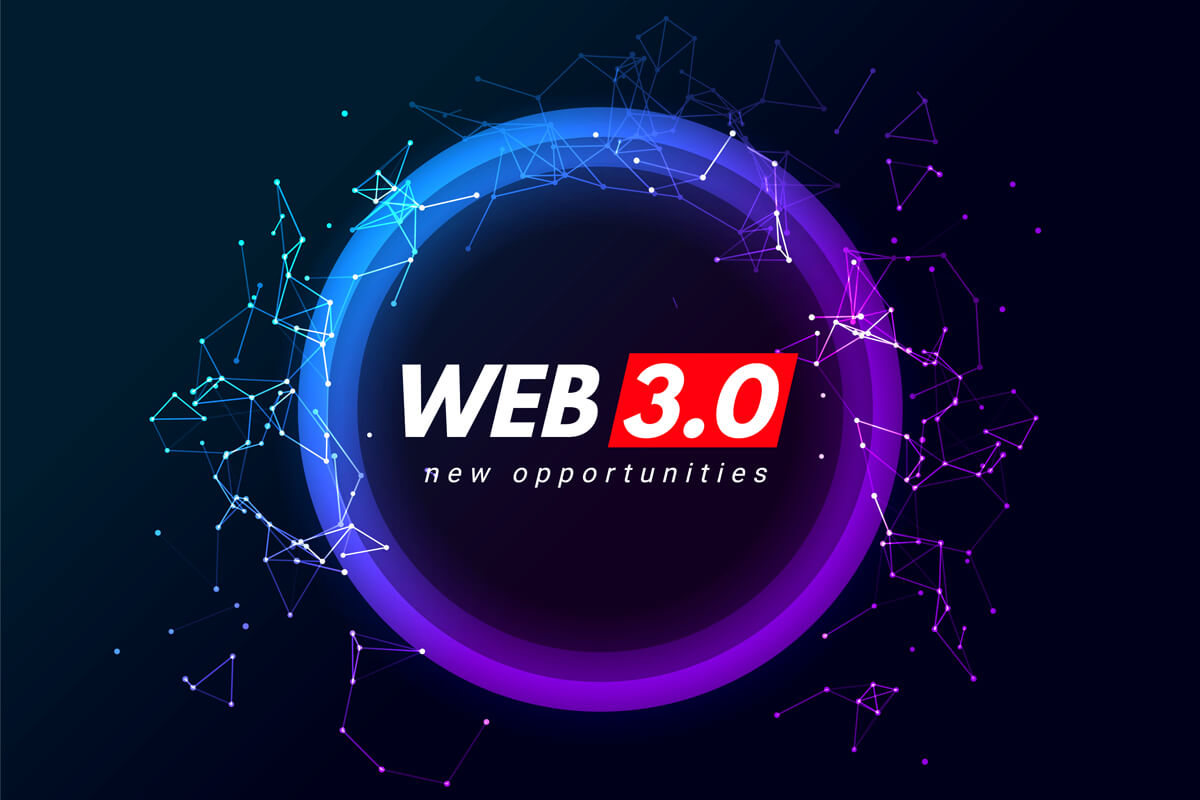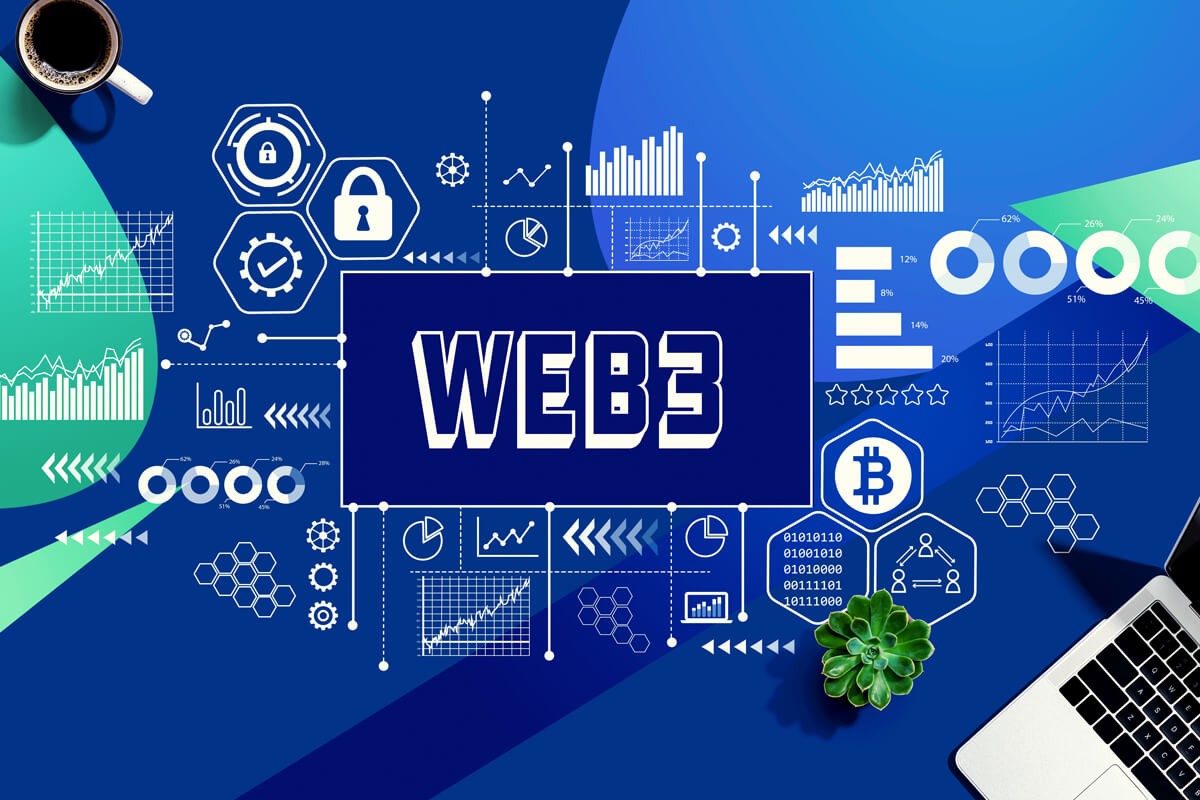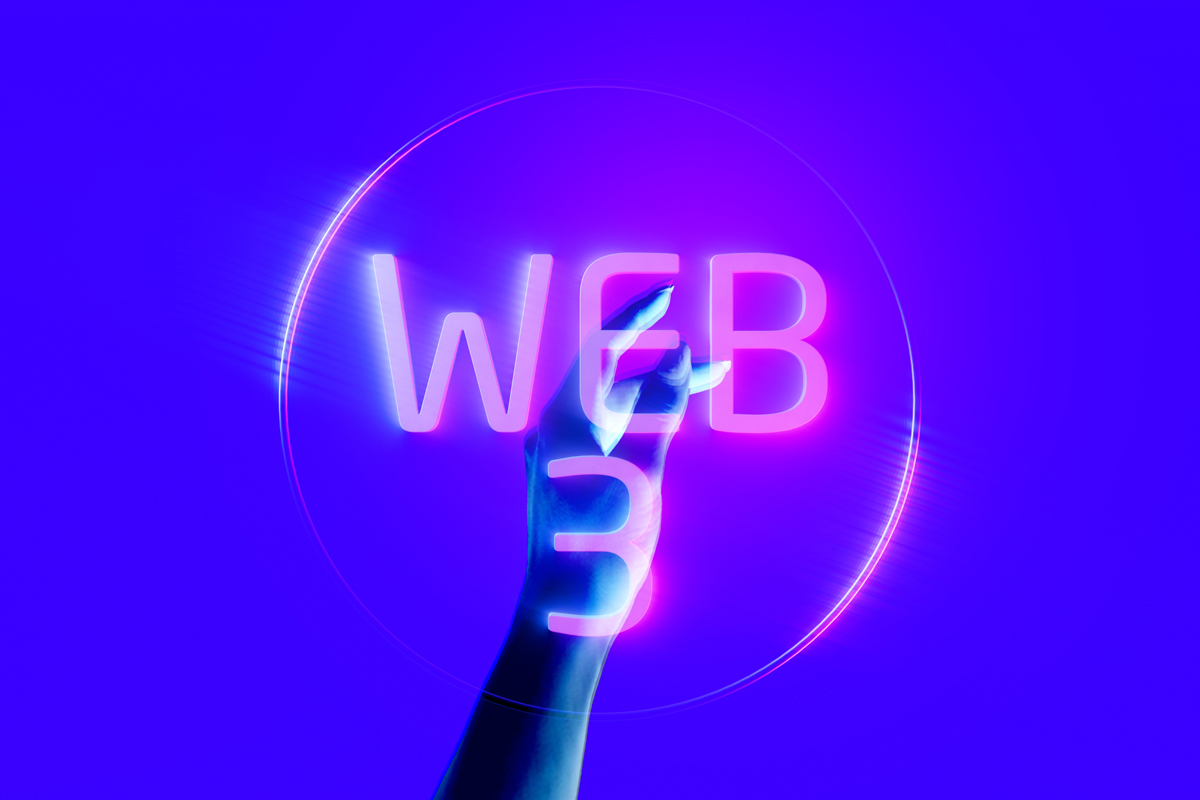Web3, also known as Web 3.0, is the next evolution of the World Wide Web. It is a decentralized, open-source platform that aims to give users more control over their data and online interactions. Unlike previous versions of the web, which have been centralized and controlled by a small group of tech giants, Web3 is built on a foundation of blockchain technology and decentralized networks.
Purpose and Goal of Web3
The purpose of Web3 is to create a more equitable and open online ecosystem where users have greater autonomy and control over their data. This is achieved through decentralized technologies such as blockchain, which enables a new generation of decentralized applications (dApps) to be built.
These dApps can run on a decentralized network, meaning they are not controlled by any single entity and are instead operated by a network of users. This allows for a more democratic and open system where users can interact with each other directly without the need for intermediaries such as Facebook or Google.
How Web3 is different from previous versions of the web
Web3 is different from previous versions of the web in several key ways:
- Decentralization: Unlike previous versions of the web, which a small group of tech giants has controlled, Web3 is built on a decentralized network, meaning no single entity controls it.
- Blockchain technology: Web3 utilizes blockchain technology, which enables the creation of decentralized applications (dApps) that can run on a decentralized network.
- Control over data: In Web3, users have greater control over their data. They can choose who has access to it, and how it is used.
- Interoperability: Web3 enables different dApps to work together seamlessly, creating a more cohesive and connected online ecosystem.
- Security: Web3 is designed to be more secure than previous versions of the web, thanks to its decentralized nature and the use of blockchain technology.
Overall, Web3 is the next step in the evolution of the World Wide Web, moving from a centralized to a decentralized model, and giving users more control over their data and online interactions.
Key components of Web3
Web3, also known as Web 3.0, is the next evolution of the World Wide Web. It is a decentralized, open-source platform that aims to give users more control over their data and online interactions. The key components of Web3 include:
- Blockchain technology: A blockchain is a decentralized, digital ledger that records transactions across a network of computers. This technology is the backbone of Web3, and is used to create decentralized applications (dApps) that can run on a decentralized network.
- Decentralized applications (dApps): A decentralized application (dApp) is a digital application that runs on a decentralized network, rather than on a single computer or server. DApps are built on blockchain technology and can be used for various purposes, such as social networks, marketplaces, and games.
- Decentralized finance (DeFi): Decentralized finance (DeFi) is a financial system built on blockchain technology, which enables the creation of decentralized financial services such as lending, borrowing, and trading. DeFi aims to democratize access to financial services, making them accessible to anyone with an internet connection.
- Decentralized autonomous organizations (DAOs): A decentralized autonomous organization (DAO) is a digital organization governed by a set of rules encoded into smart contracts on a blockchain. DAOs allow for decentralized decision-making and can be used to create decentralized online communities or companies.
- Machine-to-machine (M2M) communication: Machine-to-machine (M2M) communication is the ability for machines to communicate directly without the need for human interaction. In Web3, M2M communication is made possible by using blockchain technology and smart contracts, which allows machines to interact with each other in a decentralized way.
These key components work together to create a decentralized, open-source platform that gives users more control over their data and online interactions. By utilizing blockchain technology, dApps, DeFi, DAOs, and M2M Communication, web3 promises to bring trustless and permissionless transactions across the web and break the centralized systems today.

Advantages of Web3
Web3, also known as Web 3.0, is the next evolution of the World Wide Web. It is a decentralized, open-source platform that aims to give users more control over their data and online interactions. The advantages of Web3 include:
- Greater decentralization and transparency: Web3 is built on a decentralized network, meaning no single entity controls it. This provides greater decentralization and transparency in the online ecosystem and increased security and trustless interactions.
- More secure and trustless interactions: Web3 utilizes blockchain technology, which creates secure and trustless interactions between users. This is because transactions on the blockchain are verified by the network and cannot be altered, providing a level of security that is impossible with traditional centralized systems.
- Greater control over personal data: In Web3, users have greater control over their data. They can choose who has access to it, and how it is used. This is because data is stored on the blockchain, which allows for greater transparency and accountability in how data is used.
- Increased accessibility and transparency in finance: Web3 enables the creation of decentralized financial services such as lending, borrowing, and trading. This allows for greater accessibility and transparency in finance and the democratization of financial services.
- Improved supply chain management: Web3’s decentralized network and blockchain technology also allows for improved supply chain management. It enables more transparency and traceability of products, which can help increase efficiency, reduce costs, and improve the overall supply chain process.
Web3 offers a wide range of advantages over previous versions of the web, such as greater decentralization and transparency, improved security, increased control over personal data, increased accessibility and transparency in finance and improved supply chain management. It aims to democratize the web, giving users greater autonomy and control over their data and online interactions.
Challenges and obstacles
Web3, also known as Web 3.0, is the next evolution of the World Wide Web. While it holds great promise and potential, there are a number of challenges and obstacles that need to be overcome in order for it to be widely adopted and realized.
- Technical challenges: One of the main challenges facing Web3 is the complexity of the technology. Building decentralized applications (dApps) and integrating them with the existing web infrastructure is a technically challenging task, which requires a high level of expertise and understanding of blockchain technology. Additionally, the scalability and performance of blockchain networks are still a major concern and to be addressed.
- Regulatory challenges: Another challenge facing Web3 is the lack of clear regulations and guidelines. As the technology is still relatively new, there is a lack of legal frameworks in place to govern decentralized applications (dApps) and decentralized finance (DeFi) platforms. This can create uncertainty for developers and users, and can make it difficult for Web3 to be adopted on a large scale.
- User adoption and accessibility: Even with advances in technology and the development of new decentralized applications (dApps), user adoption is still a challenge. For example, it might be difficult for users to navigate the complex interfaces and use cases of dApps. Additionally, the accessibility of web3 is also a concern, as there are still many people who are not familiar with the concept of blockchain technology and decentralized systems.
- Scalability: Scalability is one of the major concerns of blockchain networks, particularly as they relate to Web3. The scalability of a network determines its ability to handle a large number of transactions and users. The current capacity of most blockchain networks is still relatively low, and a significant amount of work needs to be done to increase their scalability to support the adoption of Web3 on a large scale.
While Web3 holds significant potential and promise, there are a number of challenges and obstacles that need to be overcome in order for it to be widely adopted and realized. Technical, regulatory, user adoption and scalability are major obstacles that need to be addressed for Web3 to reach its full potential.
Conclusion
Web3, also known as Web 3.0, is the next evolution of the World Wide Web. It is a decentralized, open-source platform that aims to give users more control over their data and online interactions. Throughout this blog series, we have explored the definition, key components, advantages, and challenges of Web3.
The future potential of Web3 is vast and holds tremendous promise. With its decentralized nature, it can provide greater security, transparency, and control over personal data and democratize access to financial services. Additionally, blockchain technology and the smart contract will enable new possibilities for supply chain management and M2M communication.
However, it is important to note that the development and innovation of Web3 is still ongoing and many challenges need to be addressed before it can reach its full potential. Technical challenges such as scalability, lack of clear regulations and guidelines, lack of user adoption and accessibility, and scalability all have to be overcome in order for Web3 to be widely adopted.
To ensure that Web3 reaches its full potential, we must continue to invest in its development and innovation. This includes continued research and development in blockchain technology and decentralized systems and the creation of clear regulations and guidelines to govern decentralized applications (dApps) and decentralized finance (DeFi) platforms. Additionally, efforts need to be made to increase the accessibility and user-friendliness of dApps and blockchain-based platforms, to make it more accessible to a wider audience.
In conclusion, Web3 is the next evolution of the World Wide Web, offering exciting new possibilities for the future. While challenges remain, the potential for Web3 to revolutionize the way we interact online makes it worth pursuing. Investing in its development and innovation will be crucial to ensure that Web3 reaches its full potential and positively affects our online lives.
Web3, also known as Web 3.0, is the next evolution of the World Wide Web. It is a decentralized, open-source platform that aims to give users more control over their data and online interactions. Unlike previous versions of the web, which have been centralized and controlled by a small group of tech giants, Web3 is built on a foundation of blockchain technology and decentralized networks.
Purpose and Goal of Web3
The purpose of Web3 is to create a more equitable and open online ecosystem where users have greater autonomy and control over their data. This is achieved through decentralized technologies such as blockchain, which enables a new generation of decentralized applications (dApps) to be built.
These dApps can run on a decentralized network, meaning they are not controlled by any single entity and are instead operated by a network of users. This allows for a more democratic and open system where users can interact with each other directly without the need for intermediaries such as Facebook or Google.
How Web3 is different from previous versions of the web
Web3 is different from previous versions of the web in several key ways:
- Decentralization: Unlike previous versions of the web, which a small group of tech giants has controlled, Web3 is built on a decentralized network, meaning no single entity controls it.
- Blockchain technology: Web3 utilizes blockchain technology, which enables the creation of decentralized applications (dApps) that can run on a decentralized network.
- Control over data: In Web3, users have greater control over their data. They can choose who has access to it, and how it is used.
- Interoperability: Web3 enables different dApps to work together seamlessly, creating a more cohesive and connected online ecosystem.
- Security: Web3 is designed to be more secure than previous versions of the web, thanks to its decentralized nature and the use of blockchain technology.
Overall, Web3 is the next step in the evolution of the World Wide Web, moving from a centralized to a decentralized model, and giving users more control over their data and online interactions.
Key components of Web3
Web3, also known as Web 3.0, is the next evolution of the World Wide Web. It is a decentralized, open-source platform that aims to give users more control over their data and online interactions. The key components of Web3 include:
- Blockchain technology: A blockchain is a decentralized, digital ledger that records transactions across a network of computers. This technology is the backbone of Web3, and is used to create decentralized applications (dApps) that can run on a decentralized network.
- Decentralized applications (dApps): A decentralized application (dApp) is a digital application that runs on a decentralized network, rather than on a single computer or server. DApps are built on blockchain technology and can be used for various purposes, such as social networks, marketplaces, and games.
- Decentralized finance (DeFi): Decentralized finance (DeFi) is a financial system built on blockchain technology, which enables the creation of decentralized financial services such as lending, borrowing, and trading. DeFi aims to democratize access to financial services, making them accessible to anyone with an internet connection.
- Decentralized autonomous organizations (DAOs): A decentralized autonomous organization (DAO) is a digital organization governed by a set of rules encoded into smart contracts on a blockchain. DAOs allow for decentralized decision-making and can be used to create decentralized online communities or companies.
- Machine-to-machine (M2M) communication: Machine-to-machine (M2M) communication is the ability for machines to communicate directly without the need for human interaction. In Web3, M2M communication is made possible by using blockchain technology and smart contracts, which allows machines to interact with each other in a decentralized way.
These key components work together to create a decentralized, open-source platform that gives users more control over their data and online interactions. By utilizing blockchain technology, dApps, DeFi, DAOs, and M2M Communication, web3 promises to bring trustless and permissionless transactions across the web and break the centralized systems today.

Advantages of Web3
Web3, also known as Web 3.0, is the next evolution of the World Wide Web. It is a decentralized, open-source platform that aims to give users more control over their data and online interactions. The advantages of Web3 include:
- Greater decentralization and transparency: Web3 is built on a decentralized network, meaning no single entity controls it. This provides greater decentralization and transparency in the online ecosystem and increased security and trustless interactions.
- More secure and trustless interactions: Web3 utilizes blockchain technology, which creates secure and trustless interactions between users. This is because transactions on the blockchain are verified by the network and cannot be altered, providing a level of security that is impossible with traditional centralized systems.
- Greater control over personal data: In Web3, users have greater control over their data. They can choose who has access to it, and how it is used. This is because data is stored on the blockchain, which allows for greater transparency and accountability in how data is used.
- Increased accessibility and transparency in finance: Web3 enables the creation of decentralized financial services such as lending, borrowing, and trading. This allows for greater accessibility and transparency in finance and the democratization of financial services.
- Improved supply chain management: Web3’s decentralized network and blockchain technology also allows for improved supply chain management. It enables more transparency and traceability of products, which can help increase efficiency, reduce costs, and improve the overall supply chain process.
Web3 offers a wide range of advantages over previous versions of the web, such as greater decentralization and transparency, improved security, increased control over personal data, increased accessibility and transparency in finance and improved supply chain management. It aims to democratize the web, giving users greater autonomy and control over their data and online interactions.
Challenges and obstacles
Web3, also known as Web 3.0, is the next evolution of the World Wide Web. While it holds great promise and potential, there are a number of challenges and obstacles that need to be overcome in order for it to be widely adopted and realized.
- Technical challenges: One of the main challenges facing Web3 is the complexity of the technology. Building decentralized applications (dApps) and integrating them with the existing web infrastructure is a technically challenging task, which requires a high level of expertise and understanding of blockchain technology. Additionally, the scalability and performance of blockchain networks are still a major concern and to be addressed.
- Regulatory challenges: Another challenge facing Web3 is the lack of clear regulations and guidelines. As the technology is still relatively new, there is a lack of legal frameworks in place to govern decentralized applications (dApps) and decentralized finance (DeFi) platforms. This can create uncertainty for developers and users, and can make it difficult for Web3 to be adopted on a large scale.
- User adoption and accessibility: Even with advances in technology and the development of new decentralized applications (dApps), user adoption is still a challenge. For example, it might be difficult for users to navigate the complex interfaces and use cases of dApps. Additionally, the accessibility of web3 is also a concern, as there are still many people who are not familiar with the concept of blockchain technology and decentralized systems.
- Scalability: Scalability is one of the major concerns of blockchain networks, particularly as they relate to Web3. The scalability of a network determines its ability to handle a large number of transactions and users. The current capacity of most blockchain networks is still relatively low, and a significant amount of work needs to be done to increase their scalability to support the adoption of Web3 on a large scale.
While Web3 holds significant potential and promise, there are a number of challenges and obstacles that need to be overcome in order for it to be widely adopted and realized. Technical, regulatory, user adoption and scalability are major obstacles that need to be addressed for Web3 to reach its full potential.
Conclusion
Web3, also known as Web 3.0, is the next evolution of the World Wide Web. It is a decentralized, open-source platform that aims to give users more control over their data and online interactions. Throughout this blog series, we have explored the definition, key components, advantages, and challenges of Web3.
The future potential of Web3 is vast and holds tremendous promise. With its decentralized nature, it can provide greater security, transparency, and control over personal data and democratize access to financial services. Additionally, blockchain technology and the smart contract will enable new possibilities for supply chain management and M2M communication.
However, it is important to note that the development and innovation of Web3 is still ongoing and many challenges need to be addressed before it can reach its full potential. Technical challenges such as scalability, lack of clear regulations and guidelines, lack of user adoption and accessibility, and scalability all have to be overcome in order for Web3 to be widely adopted.
To ensure that Web3 reaches its full potential, we must continue to invest in its development and innovation. This includes continued research and development in blockchain technology and decentralized systems and the creation of clear regulations and guidelines to govern decentralized applications (dApps) and decentralized finance (DeFi) platforms. Additionally, efforts need to be made to increase the accessibility and user-friendliness of dApps and blockchain-based platforms, to make it more accessible to a wider audience.
In conclusion, Web3 is the next evolution of the World Wide Web, offering exciting new possibilities for the future. While challenges remain, the potential for Web3 to revolutionize the way we interact online makes it worth pursuing. Investing in its development and innovation will be crucial to ensure that Web3 reaches its full potential and positively affects our online lives.





